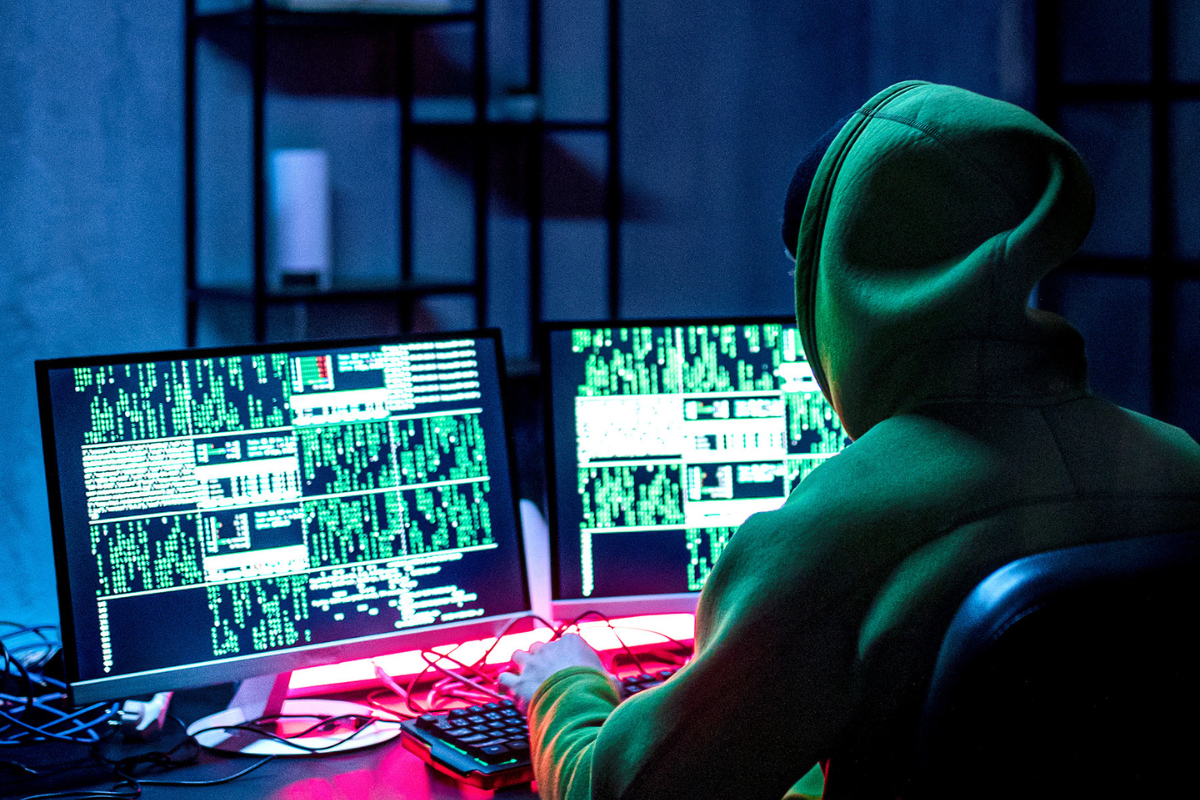The term “digital strategy” had a very short shelf life. It became a shiny new thing in the 1990s when business leaders bandied it about in speeches to impress shareholders that not only had they heard of this new-fangled world wide web, but that Brian in IT reckoned he could get them an actual website one day.
Over the following 20 years, digital strategies infiltrated every single department of every single global business, elevating the IT Brians several places up the C-suite pecking order.
Today, the phrase is largely redundant as the digital strategy is the strategy. Corporations no longer do digital, they are digital. And that means both keeping up with almost daily technological advances, and, even more importantly, predicting and planning for their digital future.
“The pace of change is only going to accelerate,” leading American futurist Scott Steinberg warns The CEO Magazine.
“The next 10 years will bring more change than the prior 10,000. And organizations simply aren’t equipped to deal with it.”
But what trends will fuel that change? The AI market is predicted to grow nearly 300 percent by 2029, but only if said AI can figure out a way to fix the skills shortage in data analytics.
That’s now the biggest single factor holding back innovation, an Equinox survey found last year. More than 80 percent of AI teams are under-resourced, according to a recent United Kingdom report, and less than a fifth of companies are installing it at scale.
Meanwhile, the metaverse may have the visual sophistication of Ape Escape on PlayStation 1, but it isn’t going away. Augmented reality has already become integral to industries including architecture, infrastructure engineering, space exploration, warfare, live entertainment, retail and even travel.
For insights into how the digital landscape will be further transformed, we asked four globally renowned futurists for their predictions, and how they’ll impact global businesses.
Avatars, AI and autonomous cars

Founder of space exploration company Planetary Resources and bestselling author of Abundance – The Future is Better Than You Think, Peter Diamandis was named one of the world’s 50 greatest leaders by Fortune. He is also the Co-Founder of Singularity University, a Silicon Valley institution studying emerging technologies.
“The next decade will be defined by a multitude of converging exponential technologies such as AI, blockchain, robotics, sensors, networks, and virtual and augmented reality. They’ll continue to dematerialize, demonetize and democratize products and services,” he says.
“To prepare for the disruption, businesses need a culture of innovation with a laser focus on experimentation, exploration and creativity. The best way to predict the future is to create it. This means investing in research and development, partnering with startups and innovators, and fostering a mindset of continuous learning.”
Santa Monica-based Diamandis has identified a series of meta trends that he believes will drive the decade ahead. They include:
+ AI will achieve human-level intelligence.
+ More than 100 billion sensors will monitor us 24 hours a day, nurturing the ‘Internet of Everything’.
+ Smart speakers will move beyond the home and morph into cognitive prosthetics such as Amazon’s Alexa or even Marvel’s JARVIS.
+ Humanoid robots and avatars will finally arrive.
+ Autonomous and flying cars will redefine human travel.
+ Drones, 3D printing farms and robots will fuel an ‘Instant Economy of Things’ where products are delivered in hours instead of days.
+ Trillion-sensor economy –the ability to sense and know anything, anytime, anywhere.
+ Mass access to high-bandwidth brain-computer interfaces.
+ High-resolution virtual reality will reinvent commerce.
“Companies must disrupt themselves before they’re disrupted by others,” he declares. “The only constant is change, and those who are most adaptable to it will be the ones who succeed.”
New cybercrime threats

Scientific futurist and Co-Founder of this year’s Future Metaverse Conference in Sydney, Australia, Associate Professor Catherine Ball has become a sought-after strategic thinker and speaker on championing new business movements. She wrote the influential book Converge about how humanity and technology collide.
“Every business is a ‘tech’ business now, and the days of digital literacy being the sole responsibility of the CTO or CXO are long gone. As the metaverse begins to scale, both staff and customers will rely more and more on virtual worlds,” she explains.
“The biggest threats are all cybersecurity and information security related. There are large financial implications and even larger threats of reputational damage should your business fail when under attack.
“The chain is only as strong as its weakest link, so this means also helping your supply chain, subcontractors and employees stay ahead when it comes to recognizing and managing cybercrime.”
Increased connectivity through IoT has opened up potentially lucrative new fronts for hackers, with multiple household objects – such as smart home products – now vulnerable to attack. A report in 2018 warned that half a billion such devices had a built-in flaw that meant they could be used to steal user data.
At one point smart toasters were deemed such a risk that virtual toasters were designed to track the attacks on real ones being hacked.
Meanwhile, AI has been critical in developing more sophisticated cybersecurity, but it’s also been used for more sinister purposes such as learning ways to bypass security protocols to unleash malware.
This year alone more than US$100 billion will be spent on preventing data breaches.
Self-aware machinery
Scott Steinberg, keynote speaker and author of the influential book Think Like a Futurist, has provided thought leadership to more than 1,500 companies and been hailed as one the top 25 consultants on future trends worldwide.
“AI will soon be powerful enough to create its own AI routines. You’ll have factories that’ll be fully self-aware and capable of self-maintenance and repair, simulating, predicting and correcting issues either proactively or on the fly,” he suggests.
“You’re also going to see more no code solutions that’ll let folks with no programming experience build their own software and usher in an age where unprecedented numbers of individuals are online creators. Major cities may soon create digital twins in the metaverse to experiment with new urban planning strategies or traffic controls.
“Quantum computing will bring a leap forward in processing power, helping organizations make equally pronounced leaps in productivity and performance and shaming even the most advanced super-computers.”
Steinberg has even devised a futurist board game that teaches players how to reimagine their destinies by thinking creatively and adapting more quickly to change.
Pros and cons of total coverage

Leading futurist and digital strategist Tomas Haffenden is Head of Innovation at chatbot pioneers Electric Sheep and has written widely on how organizations can design their digital customer experiences.
“The pursuit of total coverage remains the most exciting thing on our collective digital horizon. Nearly 40 percent of the world still lacks fast, reliable internet access, but [Elon] Musk’s low-level orbit satellites are set to bring that number to zero, opening up countless opportunities for business and society,” he reveals.
“Education is long overdue a revolution, and mass accessibility – likely paid for by the likes of Apple and Google – will be a historic shift and would bypass repressive regimes who’ve sought to control the dissemination of information.
“But not all information is good information. The next Andrew Tate could have limitless access to a truly global audience of impressionable youth with extremely negative effects. Global coverage combined with AI and powered by quantum computing has the potential to cure cancer and destroy the world in equal measure.”
The future of futurists
Perhaps the term “futurist” will, with a degree of irony, also soon be obsolete as a corporate focus on technologies to come becomes de rigueur. Will the chief future officer become a fixture in ever-expanding boardrooms alongside the chief officers for happiness, data, talent, sustainability, storytelling and automation? If Brian wants to be among them, expertise in IT alone may not be enough.
As business leaders brace for the disruption ahead, they’ll need to accept that it’s unlikely to ever subside. As American comedian George Carlin once said, “The future will soon be a thing of the past.”
Rise of the robots
Almost half of all United States jobs could be automated and performed by robots within the next 10 to 20 years, according to a study by Oxford University researchers.
Some surprising sectors will be affected by both machine learning and physical, moving robots including data collection, cyber-defense analysis, software development, delivery, journalism, basic health care, retail and online customer care.
The report warns that no area of business can assume it won’t be affected, including agriculture where mobile machines can already treat weeds, pick strawberries, assess soil, minimize fertilizer use and plow fields.







